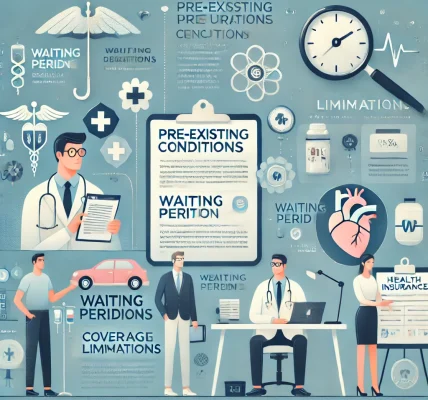Filing an insurance claim can be a complex process, and one of the most crucial factors that determine the success of your claim is proper documentation. Whether you are dealing with health, auto, home, or business insurance, having accurate and detailed records can significantly impact how smoothly your claim gets processed and whether you receive fair compensation.
In this DIY guide, we will explore why documentation is essential, what documents you need, and best practices to maximize your chances of a successful insurance claim.
1. Why Documentation is Critical in an Insurance Claim
1.1 Proof of Loss and Damages
Insurance companies require evidence of the loss, damage, or injury before approving a claim. Without proper documentation, proving your claim can be difficult.
1.2 Faster Claim Processing
Well-organized documents help insurers review your claim efficiently, reducing delays and increasing the chances of quick approval.
1.3 Prevents Disputes and Denials
Discrepancies or lack of proof can lead to claim denials. Clear documentation ensures transparency, reducing the risk of disputes with the insurance company.
1.4 Supports Appeals for Denied Claims
If your claim is denied, having proper documentation strengthens your appeal by providing additional proof to challenge the insurer’s decision.
2. Key Documents Needed for a Successful Insurance Claim
Each type of insurance claim requires specific documents. Below are some essential documents based on claim categories.
2.1 Health Insurance Claims
- Medical Bills & Invoices – Itemized statements of treatments and costs.
- Doctor’s Prescriptions – Medications and recommended treatments.
- Medical Reports – Diagnosis and progress notes.
- Hospital Discharge Summary – Details about hospital stays.
- Insurance Policy Copy – To verify coverage and terms.
2.2 Auto Insurance Claims
- Police Report – If the claim involves an accident.
- Photos & Videos of Damage – Before and after images.
- Repair Estimates – Quotes from authorized mechanics.
- Witness Statements – If there were bystanders.
- Medical Records – If there were injuries.
2.3 Home Insurance Claims
- Photographs of Property Damage – Before and after pictures.
- Receipts for Damaged Items – Proof of ownership and value.
- Repair Estimates – Contractor quotes for repairs.
- Fire or Police Reports – If applicable.
- Utility Bills & Lease Agreements – To verify property ownership or rental.
2.4 Business Insurance Claims
- Financial Records – Profit and loss statements.
- Inventory Records – Proof of lost or damaged goods.
- Incident Reports – If applicable.
- Employee Statements – For workplace-related incidents.
- Legal Contracts – If there are disputes.
3. Step-by-Step Process to Properly Document an Insurance Claim
Step 1: Capture Evidence Immediately
- Take clear photos and videos of the damage or loss from multiple angles.
- Record timestamps to prove when the incident occurred.
Step 2: Maintain an Organized File
- Keep both physical and digital copies of all documents.
- Store documents in separate folders for easy access.
Step 3: Obtain Official Reports
- Contact the police, fire department, or medical professionals if required.
- Request copies of accident reports, medical diagnoses, and repair estimates.
Step 4: Record All Communications
- Maintain a log of emails, phone calls, and meetings with your insurance company.
- Note down names, dates, and summaries of conversations.
Step 5: Get Multiple Estimates
- For home or auto repairs, obtain at least two to three quotes to compare costs.
- Provide these estimates to your insurer to ensure a fair payout.
Step 6: Submit a Complete Claim Form
- Double-check that all required fields are filled out accurately.
- Attach all necessary supporting documents before submission.
Step 7: Follow Up Regularly
- Track the status of your claim and respond promptly to insurer requests.
- Keep records of all follow-ups to ensure transparency.
4. Common Documentation Mistakes to Avoid
4.1 Not Keeping Copies of Submitted Documents
- Always retain copies of every document submitted to the insurer.
4.2 Providing Incomplete or Incorrect Information
- Double-check for errors or missing details before submitting documents.
4.3 Delaying Documentation Submission
- Insurance companies often have strict deadlines. Late submissions can lead to claim denials.
4.4 Exaggerating or Misrepresenting Information
- False claims can result in denial, policy cancellation, or even legal consequences.
4.5 Not Getting Professional Estimates
- Relying on self-assessed repair costs may lead to claim rejection. Always get estimates from licensed professionals.
5. How Proper Documentation Can Maximize Your Claim Payout
To ensure you receive the maximum payout, follow these tips:
- Be proactive – Document everything from the moment the incident occurs.
- Provide detailed evidence – More proof strengthens your case.
- Negotiate using documentation – Use estimates, receipts, and reports to justify a fair payout.
- Seek professional assistance – If the claim is large or complex, consider hiring a public adjuster or legal expert.
6. Frequently Asked Questions (FAQs)
Q1. What should I do if I lose my documents?
Request copies from hospitals, repair shops, or authorities. Always keep digital backups.
Q2. Can I submit photos taken from my phone?
Yes! Clear and timestamped mobile photos are valid evidence.
Q3. How long should I keep insurance claim records?
It’s recommended to store records for at least 5 years for reference and future claims.
Q4. What if my insurance company requests additional documents?
Provide them promptly to avoid delays. If unsure, consult your insurer or legal expert.
Q5. Can I file a claim without documentation?
It’s unlikely. Proper documentation is crucial for claim approval.
Final Thoughts
Proper documentation is the foundation of a successful insurance claim. By keeping detailed records, capturing timely evidence, and staying organized, you can significantly increase your chances of claim approval and fair compensation.



